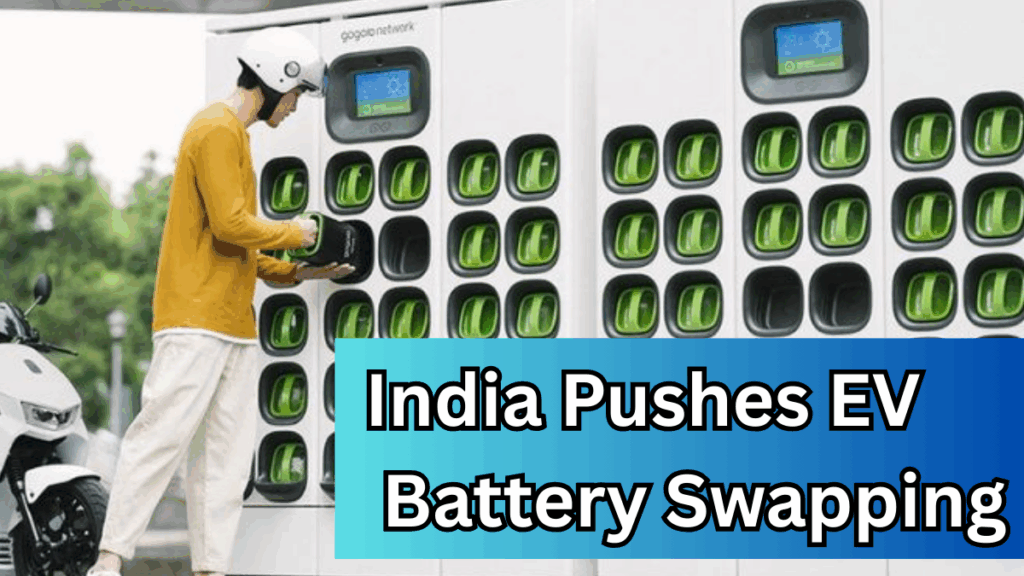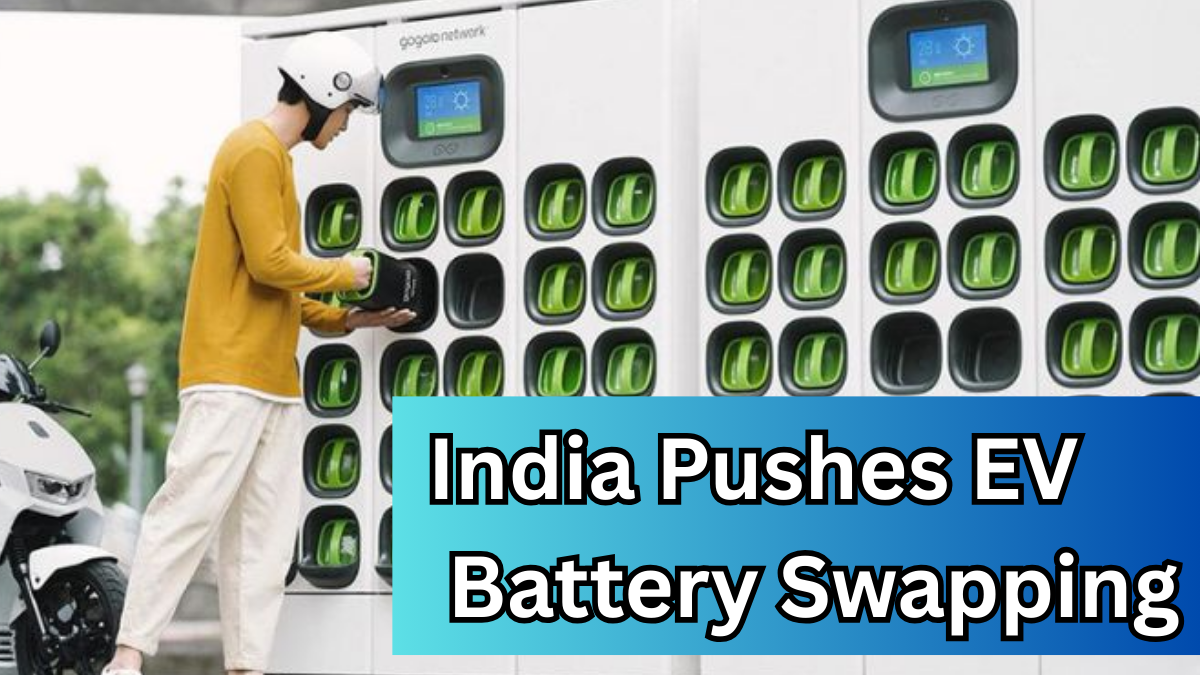India is making bold strides towards a cleaner, greener future—and electric vehicles (EVs) are at the heart of this transformation. As the nation battles rising pollution levels and fuel prices, the government is accelerating efforts in EV battery swapping in India to make green mobility more accessible and efficient for everyone.

What Is EV Battery Swapping?
EV battery swapping is a process where a depleted battery is quickly replaced with a fully charged one at designated swapping stations. This eliminates the need for long charging times and expensive charging infrastructure, offering a faster and more convenient solution for EV users.
Key Benefits of Battery Swapping
-
Time-Saving: Swap a drained battery in just a few minutes
-
Cost-Effective: Reduces upfront cost of electric vehicles as batteries can be rented
-
Space-Efficient: Requires less urban space than setting up large charging stations
-
Convenient: Ideal for two-wheelers, three-wheelers, and delivery fleets
Why Is India Pushing for Battery Swapping?
The Indian government recognizes the need to overcome certain roadblocks in the EV ecosystem—namely high battery costs, limited charging infrastructure, and long charging times. To tackle these issues head-on, they are actively promoting EV battery swapping in India through dedicated policies and industry partnerships.
Government’s Battery Swapping Policy
| Initiative | Details |
|---|---|
| Draft Battery Swapping Policy (2022) | Encourages interoperability and sets quality standards |
| FAME II Scheme | Offers incentives for electric vehicles and related infrastructure |
| Public-Private Partnerships | Collaborates with industry leaders to deploy swapping stations |
| Urban Mobility Push | Focus on deploying swapping stations in dense city areas and delivery hubs |
How Battery Tech Is Evolving in India
Battery technology in India is rapidly evolving. Innovations in lithium-ion batteries and solid-state batteries are making swappable solutions more viable and efficient.
Current Trends in Battery Tech
-
Lightweight, high-density batteries for improved energy efficiency
-
Smart battery management systems (BMS) for enhanced safety and monitoring
-
Standardization efforts to ensure all batteries can be swapped across different vehicle models
The government is also encouraging startups and tech firms to develop sustainable battery solutions to support the growth of green mobility across the country.
Impact on India’s Electric Vehicle Ecosystem
Battery swapping can be a game-changer, especially for:
-
Delivery fleets: Reduces downtime and operational costs
-
Public transport: Offers a reliable and fast energy solution for e-rickshaws and buses
-
Urban commuters: Makes owning and maintaining EVs simpler and more affordable
As EV battery swapping in India gains traction, the country is inching closer to its net-zero goals and reducing its dependency on fossil fuels.
The Road Ahead: Challenges and Opportunities
Despite the promise, some challenges remain:
| Challenges | Opportunities |
|---|---|
| Lack of standardized battery models | Push for uniform battery tech across manufacturers |
| Initial investment for infrastructure | Boost in job creation and local manufacturing |
| Consumer awareness | Educational campaigns and pilot programs to promote adoption |
Still, with increasing support from the government and private sector, electric vehicles and battery swapping could become the norm rather than the exception.
FAQs
1. What is EV battery swapping and how does it work?
EV battery swapping allows you to replace a discharged EV battery with a fully charged one at a swapping station. It’s quick and reduces the need to wait for charging.
2. How will battery swapping help promote green mobility in India?
By making EVs more affordable and convenient to use, battery swapping helps reduce pollution and supports the country’s transition to sustainable transport.
3. Which types of vehicles are best suited for battery swapping?
Two-wheelers, three-wheelers, and commercial delivery vehicles are ideal candidates due to their uniform battery sizes and high usage.
4. Is battery swapping cost-effective compared to traditional charging?
Yes, especially for commercial operators and fleet owners. It lowers downtime and often involves renting the battery, reducing upfront costs.
Final Thoughts
India’s proactive approach toward EV battery swapping is a critical move in its green revolution. With a robust framework and technological innovation, the country is paving the way for green mobility, transforming not just how we drive, but how we think about transportation.
Click here to learn more
